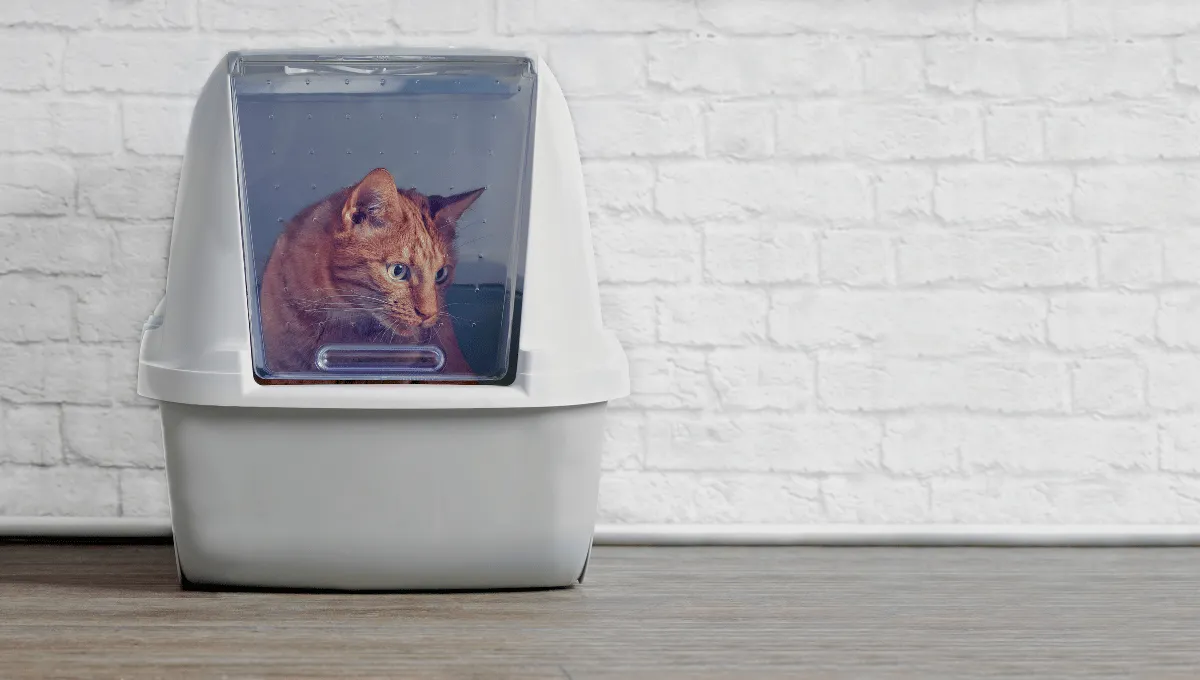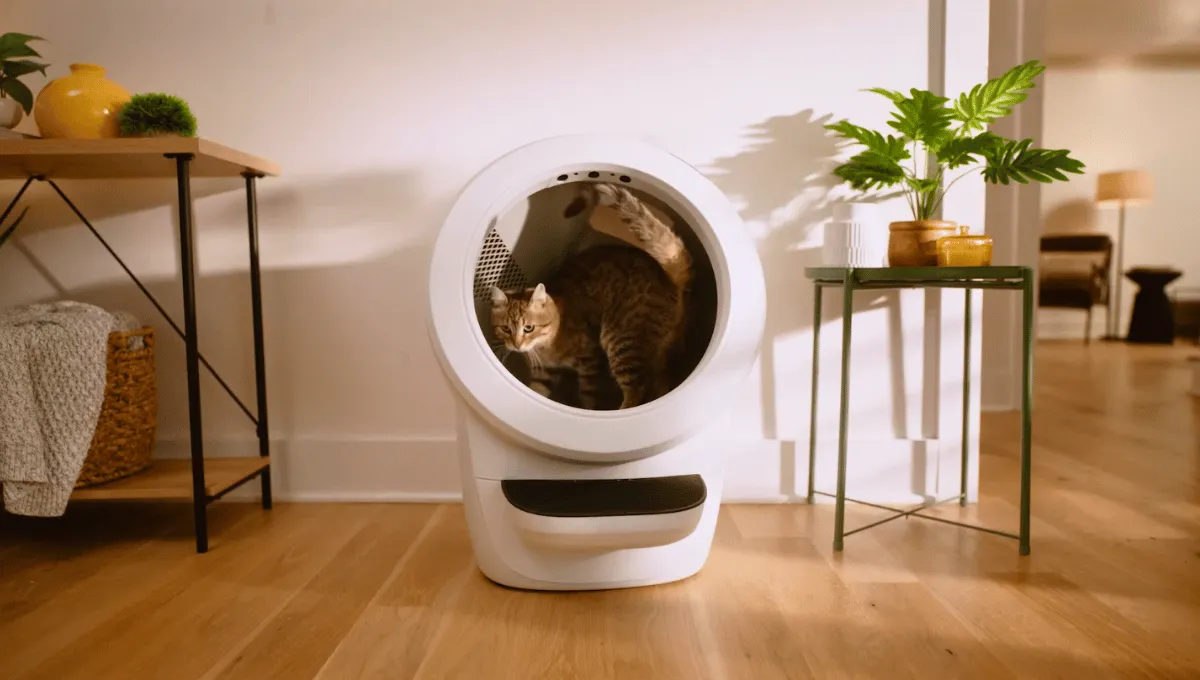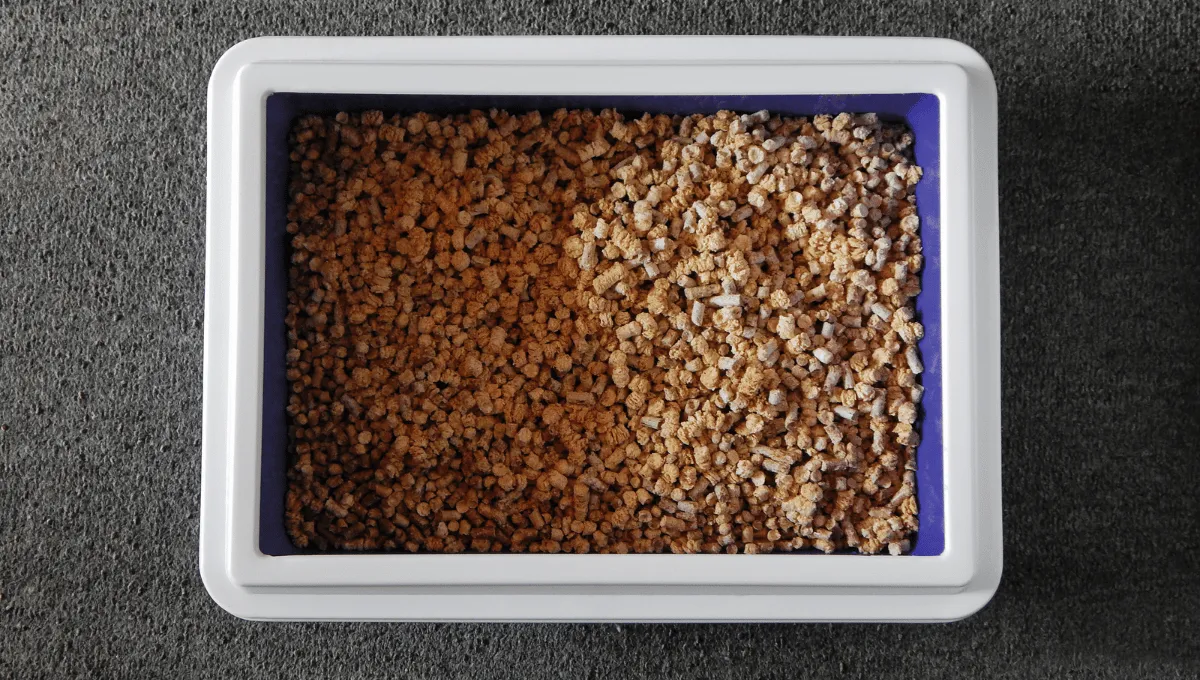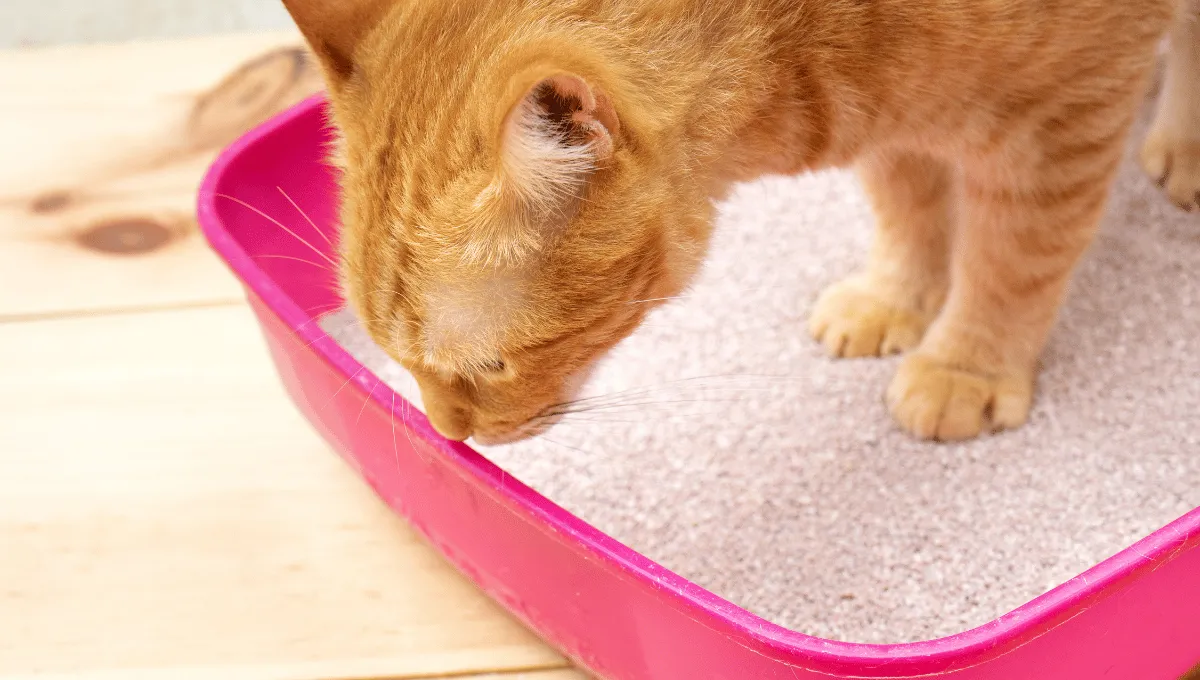Transitioning your feline to a covered litter box is not a simple task. However, it may be necessary for one reason or another.
For example, if you have small children who crawl or are just learning to walk, a covered litter box will help maintain cleanliness and solve this issue while providing your cat the privacy and protection it needs when using the box.
Transitioning a cat from an open to a covered litter box can be time-consuming and may require patience. If you have decided to transition your cat to a covered litter box, refer to the guide below to learn more about the process.
The Positive Aspects of A Covered Litter Box
Before transitioning your cat to an enclosed litter box, you should understand the positive aspects of using one. Some of the positive aspects include:
1. A covered litter box can help contain foul smells. Felines are fastidious creatures; even if you own a clean feline, it can leave a strong odor in the litter box if it isn’t covered.
Moreover, a covered litter box effectively traps foul smells and prevents them from spreading throughout your home.
However, this can also be a drawback if the litter box is not cleaned regularly. An uncleaned covered litter box will become dirty, and it’s best to avoid this for hygienic reasons.
2. Another advantage of a covered litter box is that it provides more privacy for felines. Some cats prefer additional privacy whenever they use their litter box.
The covered litter box is more comfortable for cats because it creates a small, protected area where they can feel at ease while using it.
A covered litter box can also help minimize how much litter is scattered outside the box. It effectively contains the litter, leading to less sweeping and vacuuming around the house.
How to Move Your Kitten to an Enclosed Litter Container?
Let’s take a step-by-step look at how to transition your kitten to an enclosed litter box:
1. Presenting The New Enclosed Litter Tray
The first step in transitioning your kitten to an enclosed litter box is introducing the box to your feline. It is recommended that the new litter box be placed close to the current one.
If your feline doesn’t already have a litter box, the new box should be positioned where you plan to keep it permanently.
2. Removal of the Cover
Wait a few days before attaching the lid to the new litter box. This will help your feline get comfortable with the new box and prevent your cat from feeling stressed or suffocated by the enclosed space.
During this time, you can also add a small amount of your feline’s current litter to the new box so they associate it with their usual litter routine.
3. Add the Cover Firmly
After a few days, leave the lid on the new litter box slightly open. This lets your kitten get used to the cover without feeling overly confined. Gradually, you can gently close the lid until it is fully closed.
4. Track Your Cat’s Behaviour
Pay close attention to your feline’s behavior during the transition period. Observe whether they seem hesitant to use the new box or appear stressed or uncomfortable while using it.
If you notice any negative behavior, slow down the transition or temporarily switch back to an uncovered litter box.
5. Maintaining the Litter Box Clean
Additionally, keeping the litter container clean during the transition period is crucial. A dirty litter box may discourage your kitten from using it, which can delay the transition process.
What Benefits Can a Covered Litter Box Offer?
Covered litter boxes can be helpful if you have young children or prefer not to have an open tray. Here are some benefits of using an enclosed litter box:
1. No Foul Smell
Enclosed litter boxes help reduce the unpleasant odor associated with the litter box. They are especially beneficial for people with a more sensitive sense of smell.
2. Safe from Toddlers
Having a litter box eliminates the problem of odors in the house and the danger of infants dealing with it. A covered litter box makes it impossible for them to get dirty.
3. Visually Intriguing
Enclosed litter boxes are visually pleasing and come in various designs to suit different preferences.
4. Convertibility
Usually, covered litter boxes are convertible, allowing you to turn them into open trays as needed. This also makes it easier to clean the litter box.
Aside from the benefits, it is important to consider each cat’s individual preferences, as some may not like a covered litter box.
Regular cleaning is also essential to maintain a hygienic environment within the covered space, as odors and waste can build up quickly in an enclosed area if not properly maintained.
To sum up, covered litter boxes offer benefits such as privacy for cats, reduced litter dispersion and odor, sanitary barriers, aesthetic discretion, and improved litter box behavior, making them a valuable option for cat owners.
Conclusion
If you take the correct measures, moving your feline to a covered litter box can work out positively.
Begin by placing the new covered box near the old one so your feline can become acclimated to it and start exploring it.
Leave the lid open from the beginning and use familiar litter to help the new space become cozier. You may gradually adjust the enclosed container to the optimal location as your kitten uses it.
The key is patience; some cats may take longer than others to adjust. Since cats prefer clean environments, be sure to keep the litter box clean.






0 Comments